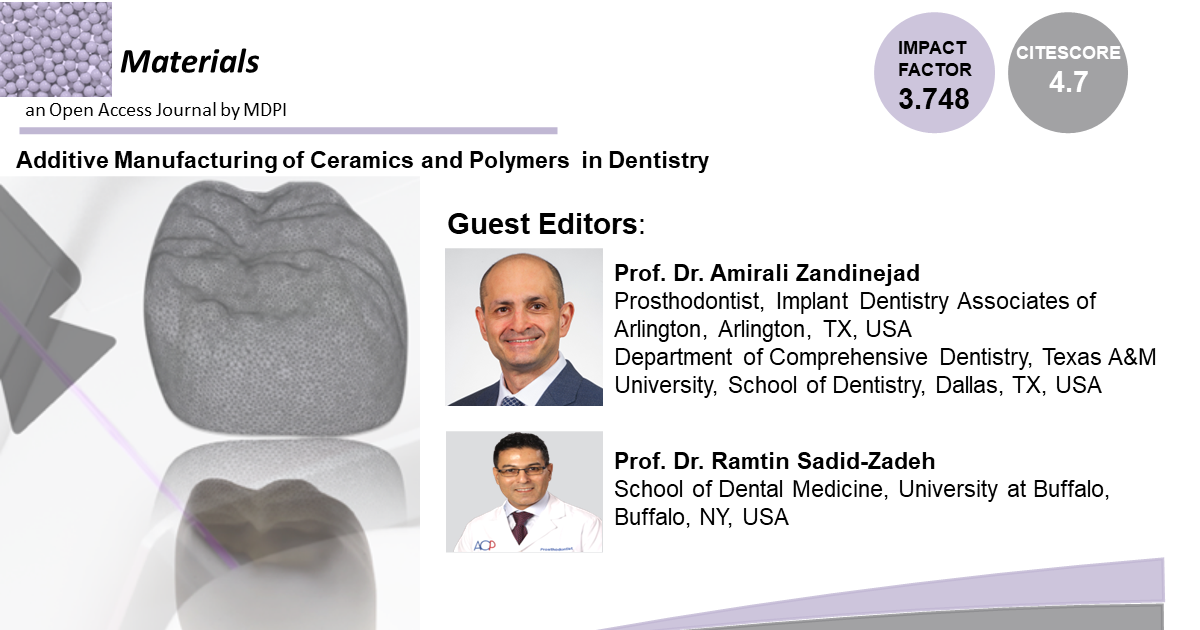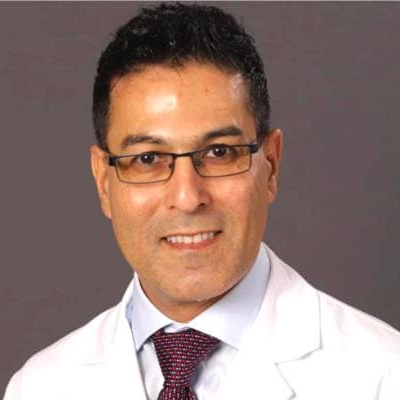Additive Manufacturing of Ceramics and Polymers in Dentistry
A special issue of Materials (ISSN 1996-1944). This special issue belongs to the section "Biomaterials".
Deadline for manuscript submissions: closed (20 September 2023) | Viewed by 5988

Special Issue Editors
Interests: additive manufacturing; 3D printing; ceramic 3D printing; digital dentistry; esthetic and implant
Special Issues, Collections and Topics in MDPI journals
Special Issue Information
Dear Colleagues,
I am delighted to invite you to submit a manuscript to our Special Issue, entitled “Additive Manufacturing of Ceramics and Polymers in Dentistry”. This issue is designed to reflect the latest developments in additive manufacturing technologies and applied materials for additive manufacturing in dentistry. Today, milling in dentistry is a proven manufacturing technique and is considered to be the gold standard; however, it has shortcomings and limitations. The use of additive manufacturing (AM), also known as 3D printing, in dentistry is relatively new, and it presents many advantages, e.g., users are able to manufacture complex geometries and manufacture complete customized designs.
Although AM is an accepted, valid, and fast-growing manufacturing technology for use with polymers in dentistry, the need to print complex geometries with multiple materials with different physical and mechanical properties, acceptable surface roughness and accuracy means that research is still underway.
Unlike polymers and metals, the AM of ceramics such as zirconia and glass ceramics is not a valid manufacturing technique in clinical dentistry. However, ceramics are well respected for their superior properties, and the dissemination of the newest technologies, innovations, creative ideas, and techniques is a great way to improve this promising and exciting manufacturing technology for ceramics in clinical dentistry.
We are inviting all manuscripts related to:
- Improvements in AM technologies of resins and ceramics;
- New applications of AM in clinical dentistry;
- Improvements in applied materials for AM of resins and composites in dentistry;
- AM materials for regenerative dentistry;
- The AM of graded structures mainly for ceramics;
- OR any other related research.
Prof. Dr. Amirali Zandinejad
Dr. Ramtin Sadid-Zadeh
Guest Editors
Manuscript Submission Information
Manuscripts should be submitted online at www.mdpi.com by registering and logging in to this website. Once you are registered, click here to go to the submission form. Manuscripts can be submitted until the deadline. All submissions that pass pre-check are peer-reviewed. Accepted papers will be published continuously in the journal (as soon as accepted) and will be listed together on the special issue website. Research articles, review articles as well as short communications are invited. For planned papers, a title and short abstract (about 250 words) can be sent to the Editorial Office for assessment.
Submitted manuscripts should not have been published previously, nor be under consideration for publication elsewhere (except conference proceedings papers). All manuscripts are thoroughly refereed through a single-blind peer-review process. A guide for authors and other relevant information for submission of manuscripts is available on the Instructions for Authors page. Materials is an international peer-reviewed open access semimonthly journal published by MDPI.
Please visit the Instructions for Authors page before submitting a manuscript. The Article Processing Charge (APC) for publication in this open access journal is 2600 CHF (Swiss Francs). Submitted papers should be well formatted and use good English. Authors may use MDPI's English editing service prior to publication or during author revisions.
Keywords
- additive manufacturing
- 3D printing
- 3D printing ceramics
- 3D printing resins
- 3D printing polymers
- dental applications
- AM of graded structure
- AM of regenerative materials in dentistry
Benefits of Publishing in a Special Issue
- Ease of navigation: Grouping papers by topic helps scholars navigate broad scope journals more efficiently.
- Greater discoverability: Special Issues support the reach and impact of scientific research. Articles in Special Issues are more discoverable and cited more frequently.
- Expansion of research network: Special Issues facilitate connections among authors, fostering scientific collaborations.
- External promotion: Articles in Special Issues are often promoted through the journal's social media, increasing their visibility.
- Reprint: MDPI Books provides the opportunity to republish successful Special Issues in book format, both online and in print.
Further information on MDPI's Special Issue policies can be found here.







